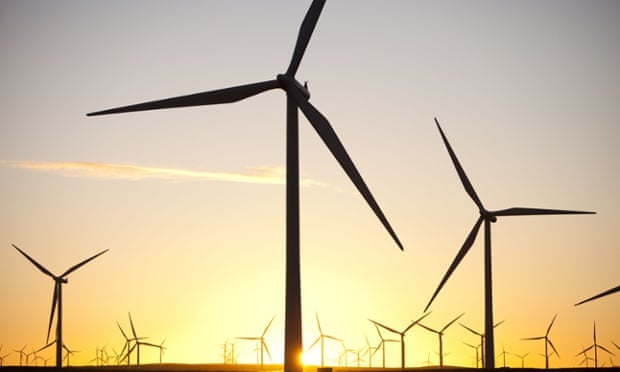Onshore windfarms far cheaper than coal and gas when health impacts are factored in, report shows
 Onshore wind is cheaper than coal, gas or nuclear energy when the costs of ‘external’ factors like air quality, human toxicity and climate change are taken into account, according to an EU analysis.
Onshore wind is cheaper than coal, gas or nuclear energy when the costs of ‘external’ factors like air quality, human toxicity and climate change are taken into account, according to an EU analysis.
The report says that for every megawatt hour (MW/h) of electricity generated, onshore wind costs roughly €105 (£83) per MW/h, compared to gas and coal which can cost up to around €164 and €233 per MW/h, respectively.
Nuclear power, offshore wind and solar energy are all comparably inexpensive generators, at roughly €125 per MW/h.
“This report highlights the true cost of Europe’s dependence on fossil fuels,” said Justin Wilkes, the deputy CEO of the European Wind Energy Association (EWEA). “Renewables are regularly denigrated for being too expensive and a drain on the taxpayer. Not only does the commission’s report show the alarming cost of coal but it also presents onshore wind as both cheaper and more environmentally-friendly.”
The paper, which was written for the European commission by the Ecofys consultancy, suggests that the Conservative party plan of restricting new onshore windfarms will mean blocking out the cheapest source of energy when environmental and health facts are taken into consideration. It has been suggested the Tory plan could be done through a cap on onshore wind turbines’ output, lower subsidies or tighter planning restrictions.
“Any plans to change policy for onshore wind must be looked at in the context of this report,” said Oliver Joy a spokesman for EWEA. “Investors need long-term visibility. ‘Stop-start’ policies as well as harsh retroactive changes can blindside investors, driving up the risk premium and cost of capital.”
The documents’ contents may also be unwelcome in some quarters of the commission, which early today published selective results from it that did not include external health and pollution costs.
These showed that renewable energy took €38.3bn of public subsidies in 2012, compared to €22.3bn for gas, coal and nuclear. The EU did however note that if free carbon allowances to polluters were included in the data, it “would reduce the gap between support for renewables and other power generation technologies.”
 Th’ Gaelic gales o’ Britain’s
Th’ Gaelic gales o’ Britain’s  If your price doesn't reflect the true cost of your product, then you are either going to go out of business, or you are going to have to foist the costs onto other people.
If your price doesn't reflect the true cost of your product, then you are either going to go out of business, or you are going to have to foist the costs onto other people.
























